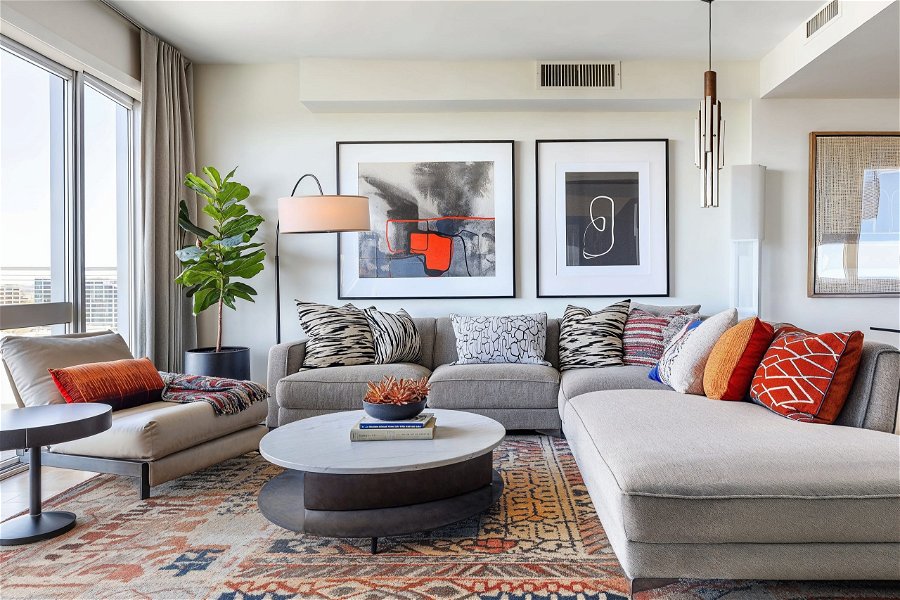
Can you spot the difference between modern and contemporary interior design? Mixing up these beautiful styles is easy to do. But after reading our ultimate guide below, you’ll be able to tell them apart like a pro. We’re putting modern vs contemporary interior design head to head to help you confidently create delightful spaces!
Modern vs Contemporary Interior Design
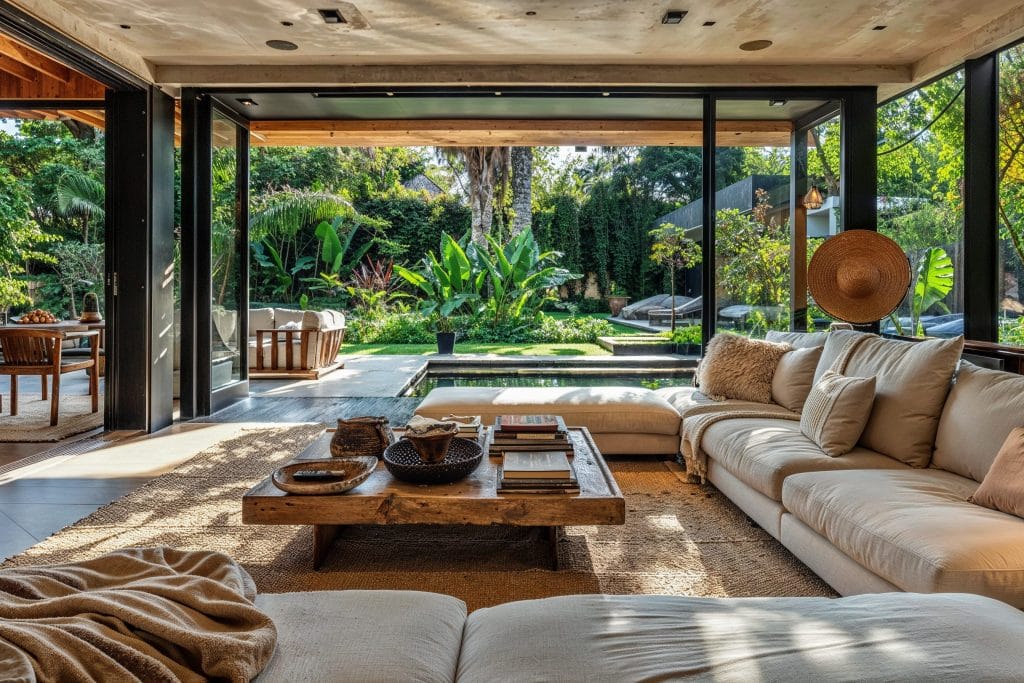
‘Contemporary’ and ‘modern’ are often used interchangeably but, although there are similarities, they are two distinct design styles from different periods. First, there was modernism, then came contemporary interior design. The latter is still forming at present. But in time, we will also look back on contemporary design as a style of a certain age.
Keep in mind your style can be a combination of two or more styles. With an interior design quiz, you can help a designer pinpoint which look will fit you and your home.
Without further ado, let’s jump right into the basics of modern vs contemporary interior design from our pros to help you accomplish your ideal design.
Modern Interior Design
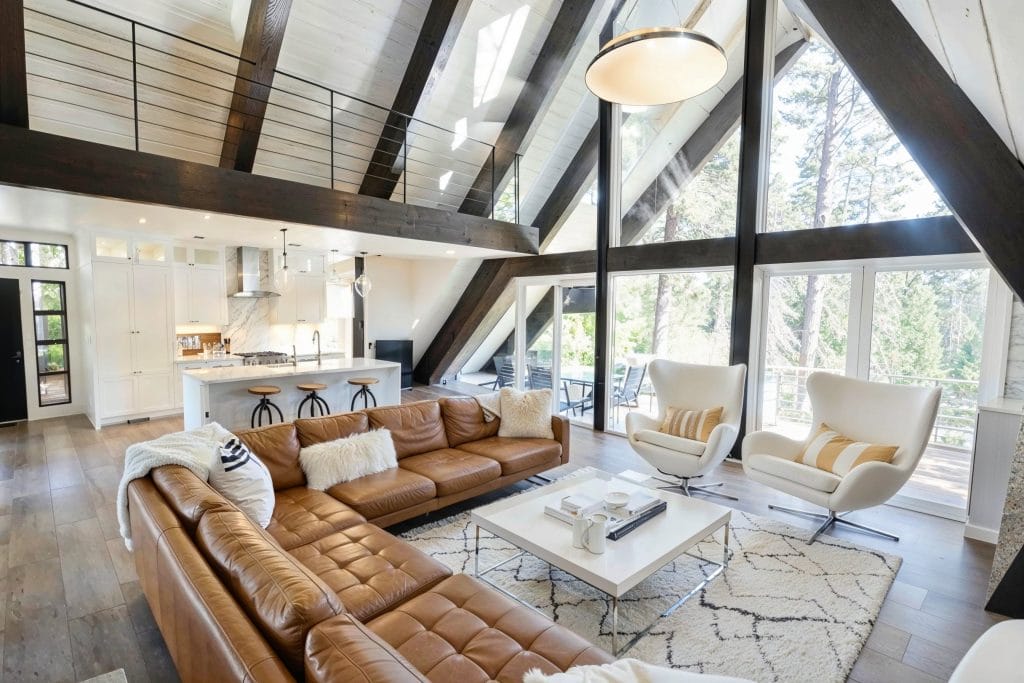
Pinning modern interior design to one definition is challenging as it has spanned for more than a century. But its essence is rooted in clean lines. Real modernism has simplicity in every aspect of its design. After all, the founding modernist movement rejected what was artificial. And as a result, homes and public spaces were no longer filled with excessive embellishments.
What is Modernism? A Modern Interior Design Definition
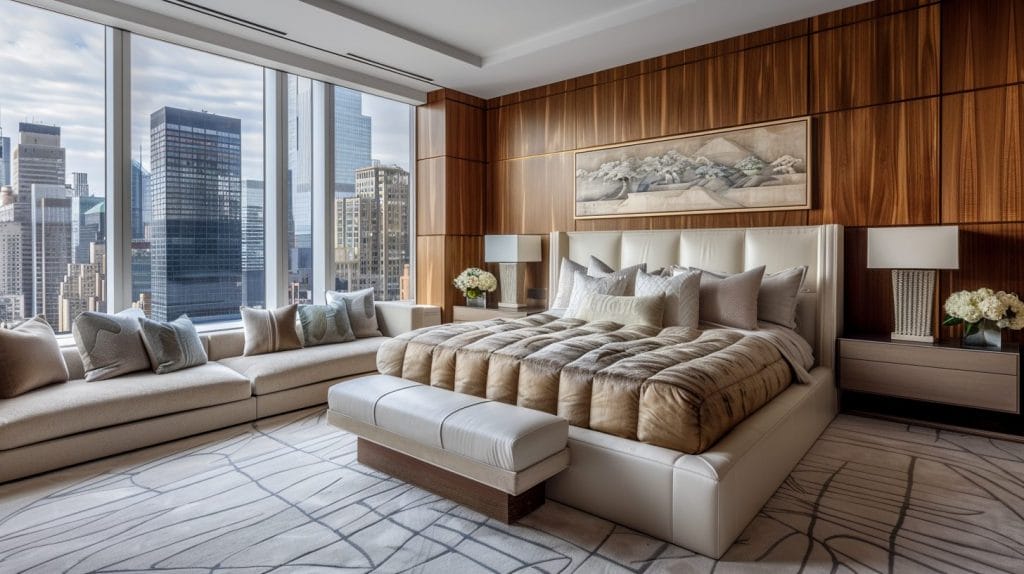
Modern interior design refers to a sleek and uncluttered style that began in the late 19th century. In its purest form, modernism reflects a fuss-free approach to life. As a result, designers kept décor minimal while emphasizing industrial materials. In addition, patterns are also few and far between. Modern interior design focuses on block colors, which include primary hues.
Need help deciding between contemporary vs modern interior design elements for your space? Take our Free Interior Design Style Quiz to learn which style best fits your preferences!
History of Modern Interior Design Ideas
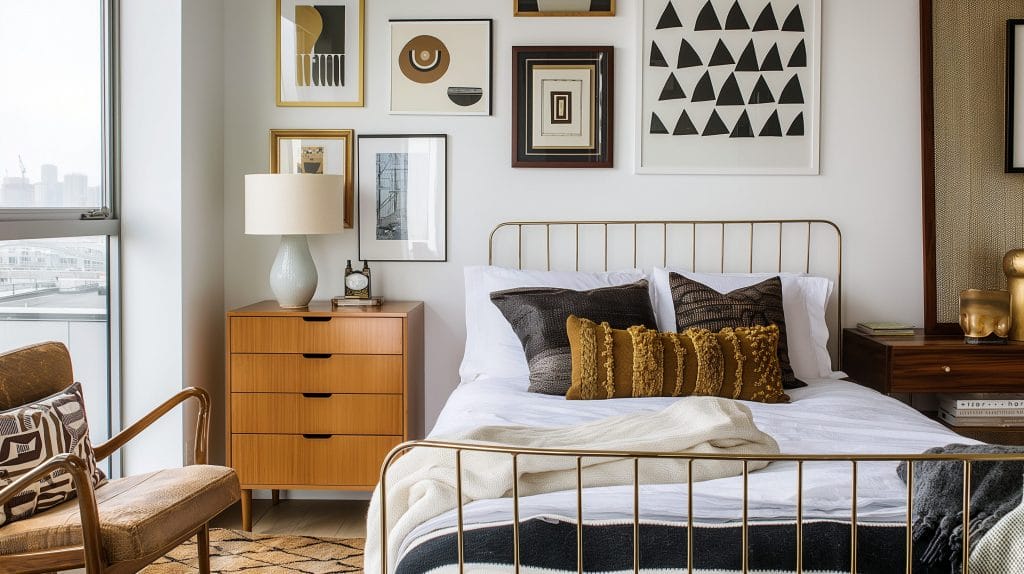
Modernism sprouted in the late 1800s as a reaction to overly ornate and artificial interiors, architecture and art. Meanwhile, by the 1930s, this movement that valued function above form truly bloomed. No-nonsense industrial materials took the lead in a time when society clung to the artificial.
Consequently, the industrial boom and growing cities created a need for simplified forms and keeping costs low. Luckily, new reinforced concrete and steel made construction cost-effective. Thanks to these revolutionary materials, architects could create buildings with large windows, flat roofs, and new shapes – even cylindrical and taller than ever before!
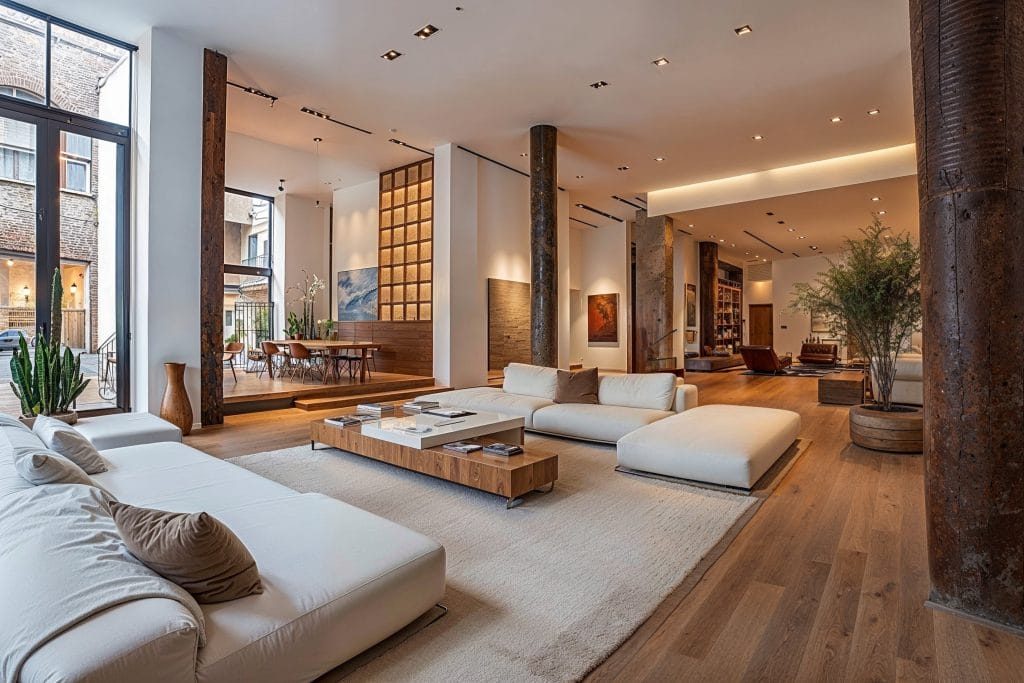
Constantly updated, modern interior design has seen many interpretations from the late 1800s up until the end of the 20th century. The Arts and Crafts movement kicked off the modern era. Which then continued to be updated and reinterpreted until finally waning in the 1970s with the rise of post-modernism. Colorful pops from more eclectic Art Deco, De Stijl, and Bauhaus interior design/art movements also helped shape modern design’s distinct, unapologetic appearance.
Today, a steady stream of modern elements still features in architecture and contemporary interior design. Read on for the essentials of a perfectly balanced modernist wonder.
8 Elements That Make a Modern Interior Design
You can tell a modern interior by its well-defined lines, precise color palette, and moderate use of décor. Here are the 8 elements of a truly modern interior.
1. Modern Art
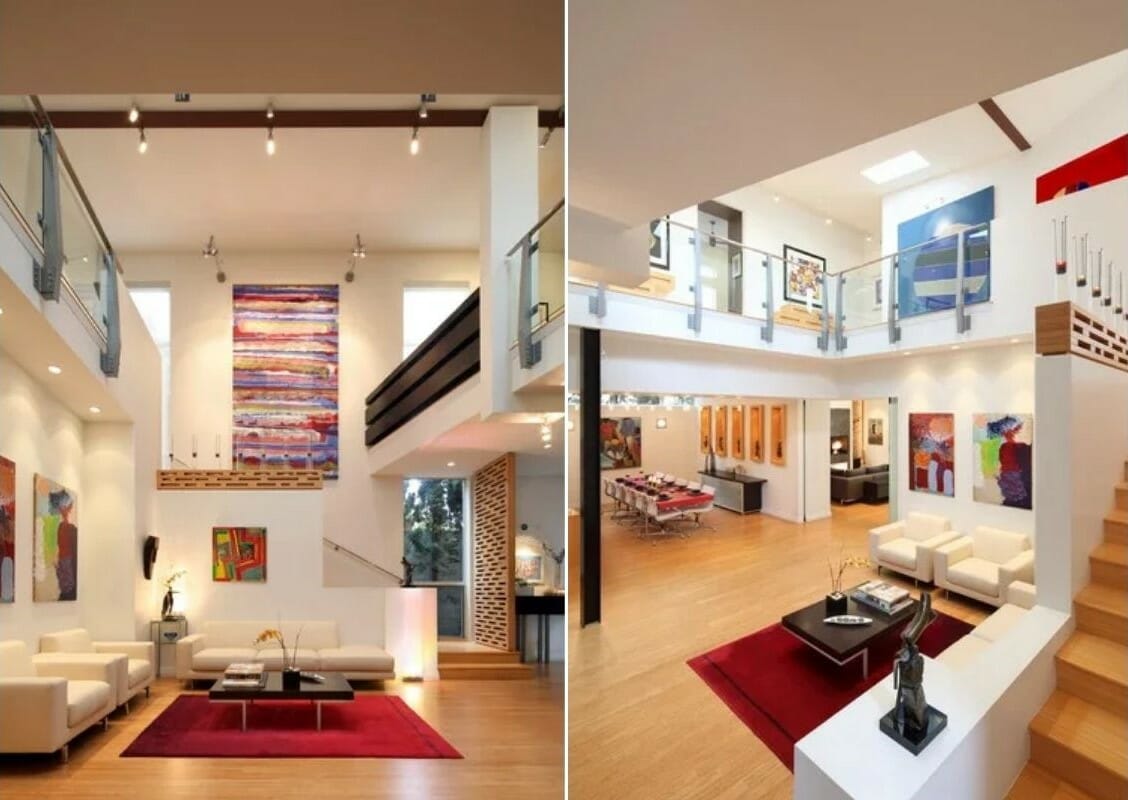
Artists revolutionized how people think about their environment. Besides, it is thanks to painters like Édouard Manet that modernism took shape. That’s why art is essential to modern interior design. In these logic-driven spaces, prints and sculptures are expressive with bold color use and unexpected forms.
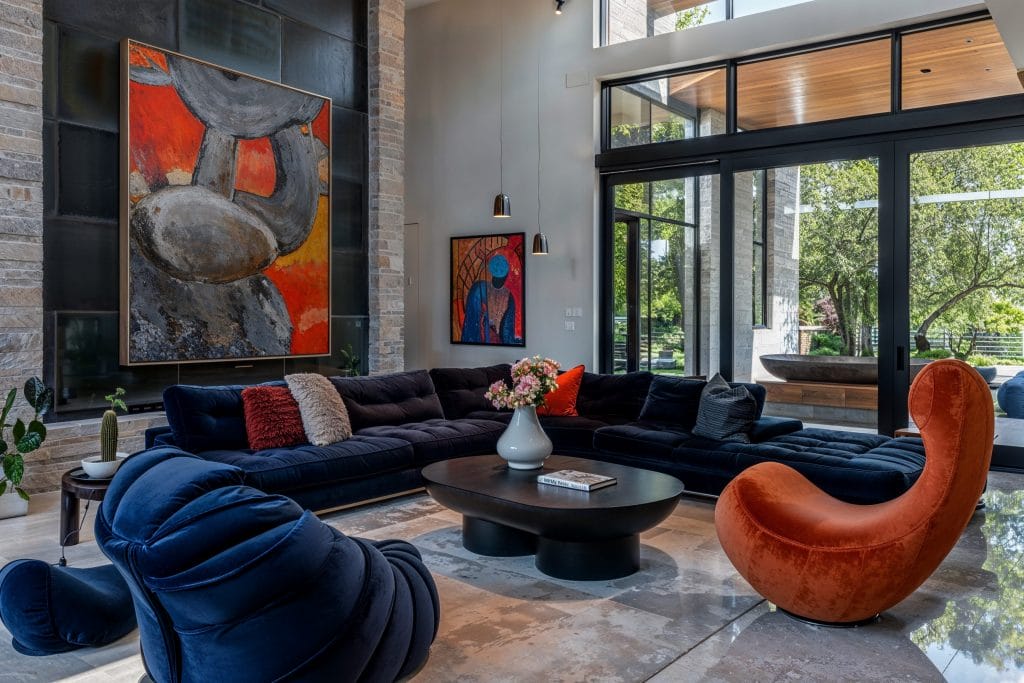
Abstract art, a favorite in modern homes, was a drastic turn from traditional idealism of the 19th century. But other iconic modernist pieces, like Vincent van Gogh’s Starry Night, Henri Matisse’s fauvist Woman with a Hat or Pablo Picasso’s Boy with a Pipe, also suit a modern home.
2. Glass, Concrete and Steel
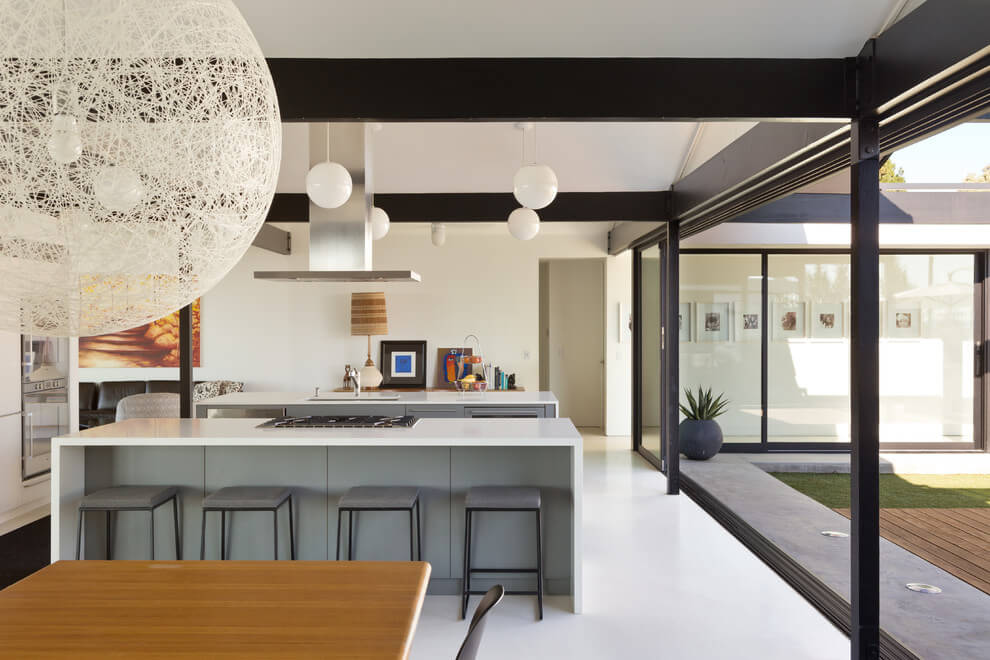
Successful modern interior design shows off the concrete, steel, and glass craftsmanship. This means the framework of furniture is often celebrated and left exposed. Therefore, designers make no effort to cover up what truly makes an object. At times, furnishings can look machine-like because of the lack of ornamentation. It’s because of modernism’s guiding philosophy “form follows function”. In this, the form is simplified to serve its function first and foremost.
3. Abstract Forms
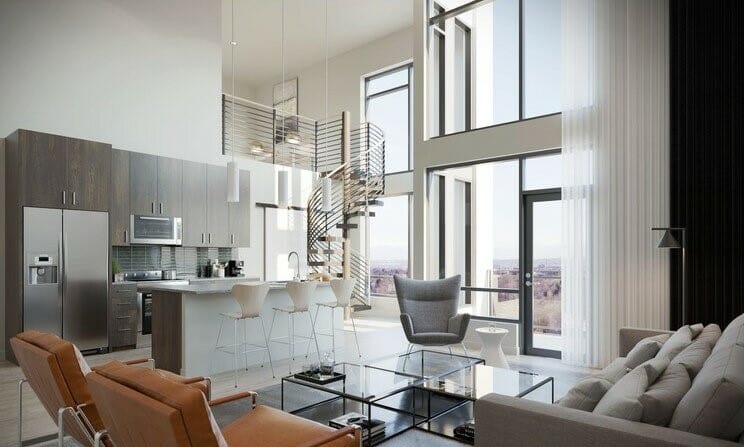
Because of a focus on function instead of appearance, designs can seem abstract, especially if compared to more luxurious furniture. Whatever you see in an authentic modern contemporary home interior is what is necessary to fulfill the most basic functional purpose.
4. Neutral Walls
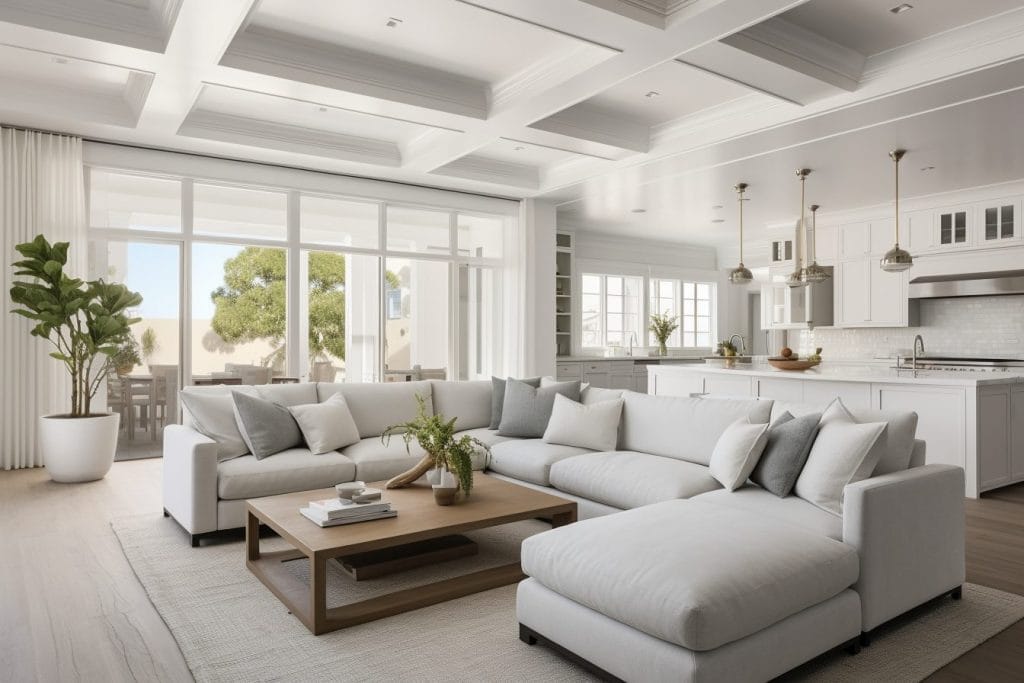
After the embellishment of the Victorian period, modernists chose the stillness of neutral walls instead. Greys, whites, and even soft pastels make the perfect backdrop for a modern design. But for the more adventurous, especially those who appreciate De Stijl, can opt for block primary colors – blue, red, and yellow.
5. Clean Lines
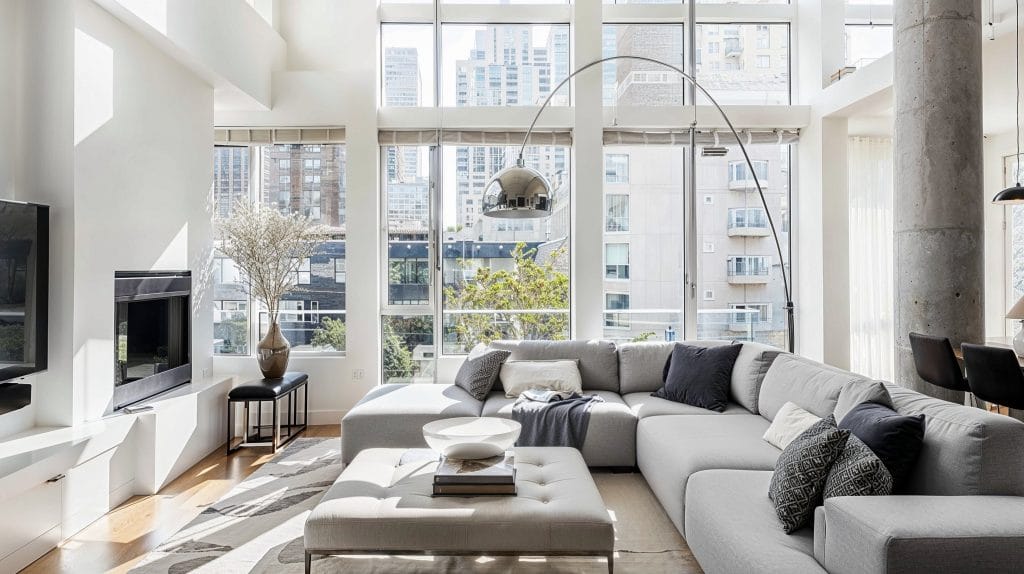
Thanks to industrial progress at the time, materials like concrete and steel were easily accessible. And designers took full advantage. With these new materials, straight lines triumphed. Architects and interior designers enjoyed balancing the opposing vertical and horizontal lines of columns, steps, and furniture.
6. No Clutter
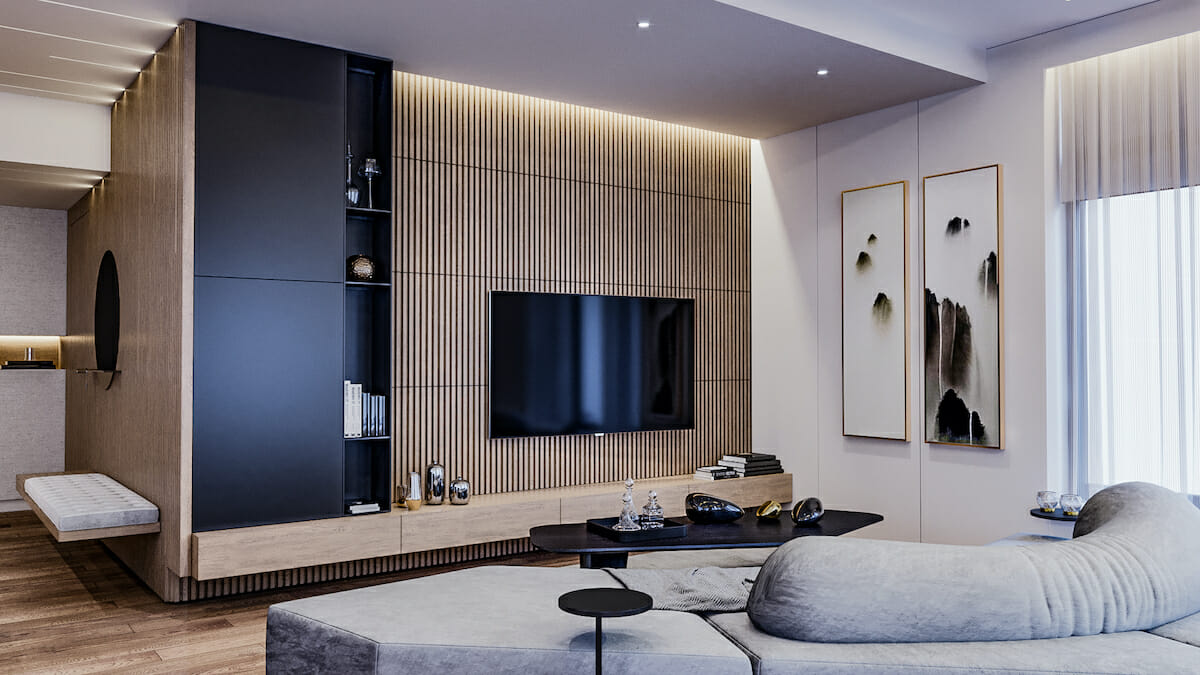
One thing is clear when you look at modern interior design ideas: clutter is not welcome. This means accessories and decoration are few and far between. Not only do designers keep décor to a minimum in modern homes, but they also balance empty and occupied spaces. We’d expect nothing less from the origins of minimalism’s “less is more”.
7. Pop of Primary Colors
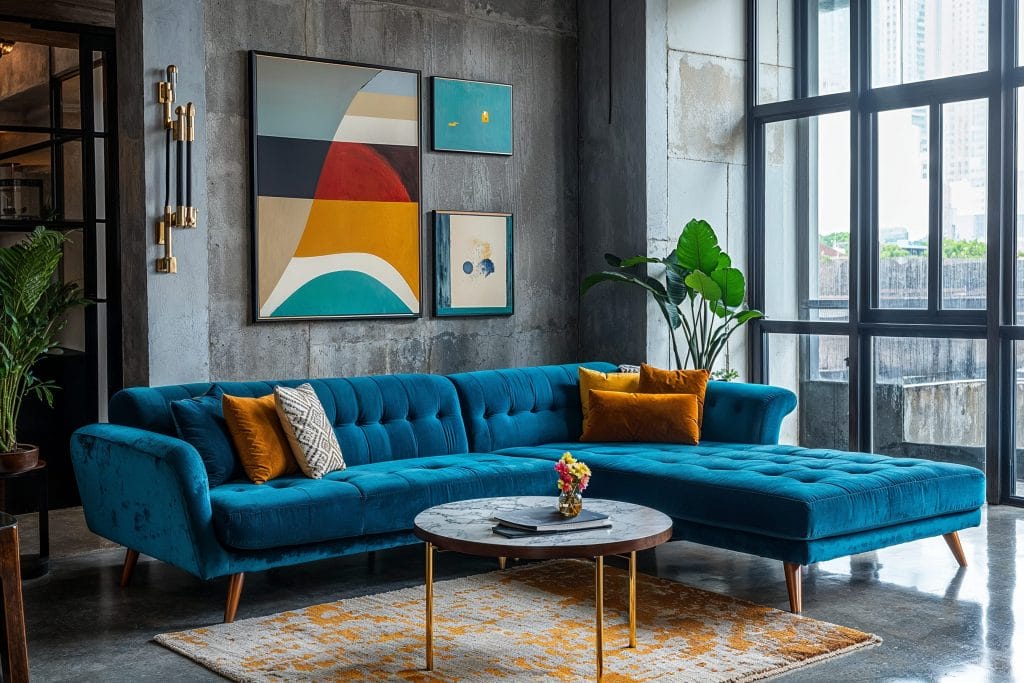
Pops of bold red, blue or yellow are characteristically modern. Earlier influences from Bauhaus and De Stijl art movements brought lively hues into the understated style. That’s why it’s not uncommon to see artwork or accent pieces in vivid contrasting colors.
8. Large Windows
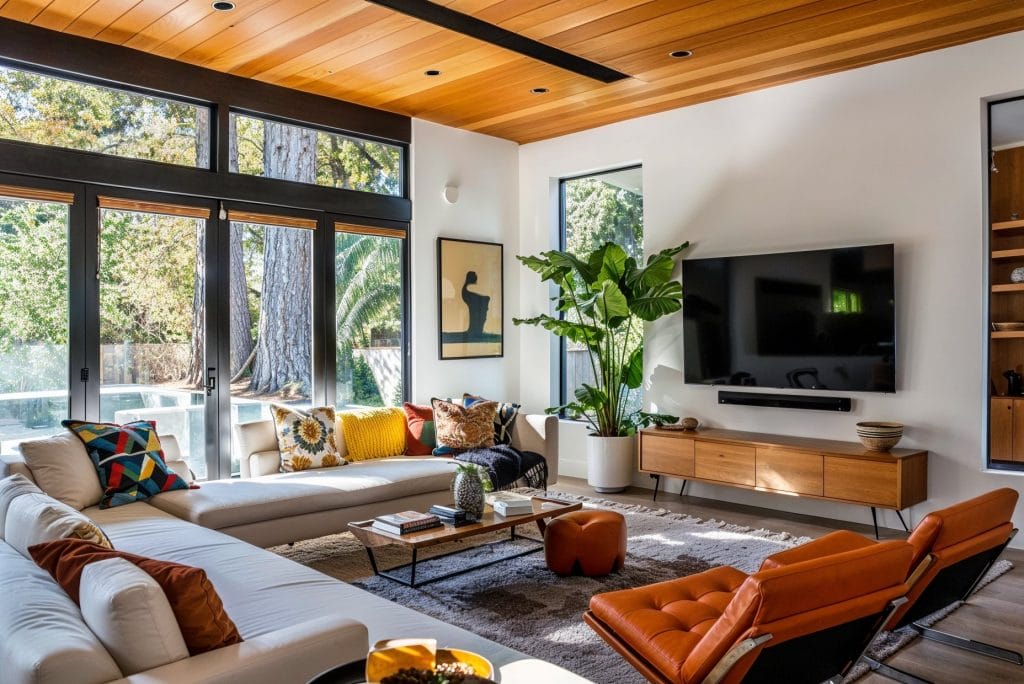
Thanks to reinforced materials, architects could make windows larger than ever before. As a result, many buildings of the modern era have big windowpanes, and little to no window dressing, letting in much needed natural light.
5 Creatives Who Shaped Modern Interior Design Ideas
Creatives, designers, and architects championed modern ideals. Here are five influential modernists who helped shape the world as we know it today.
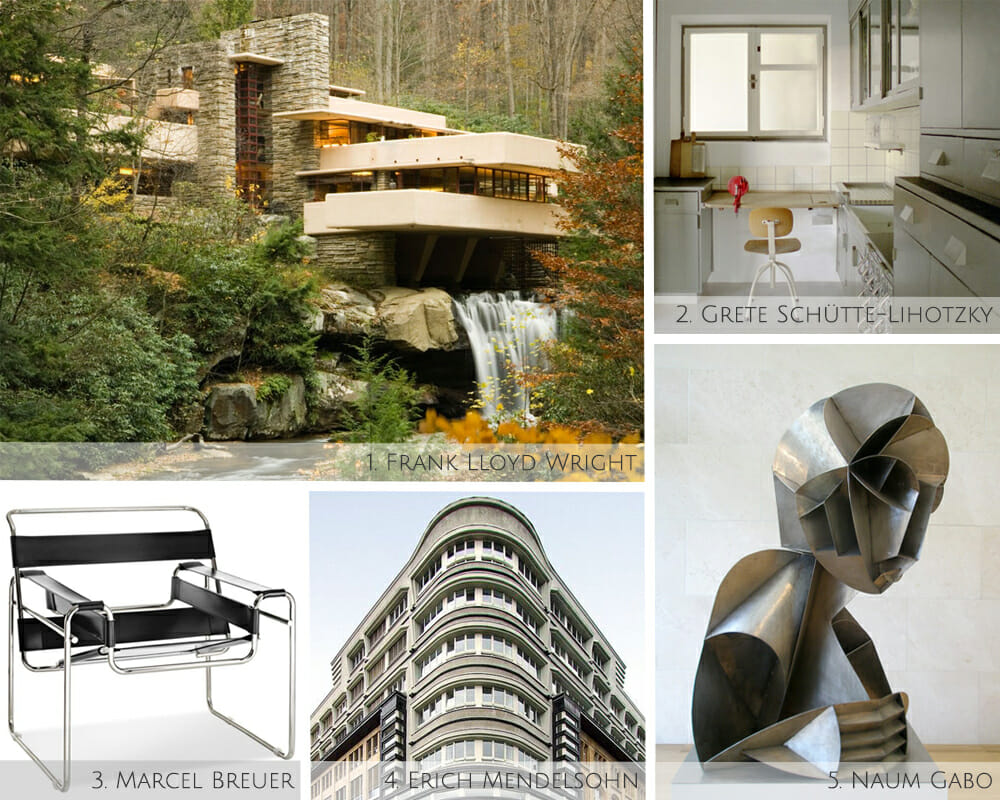
Frank Lloyd Wright (1867-1959)
As an architect, interior designer, and writer, Frank Lloyd Wright is one of the most prolific and well-known icons of modernism. After all, the honesty of materials and craftsmanship is evident in all his designs and buildings. His prairie style open-plan architecture was an antidote to the closed-in spaces of the Victorian era.
Grete Schütte-Lihotzky (1897–2000)
While working on projects to create affordable housing, Grete Schütte-Lihotzky came up with the Frankfurt Kitchen – a predecessor of the fitted kitchen we know and love today. Her efficient design simplified living by making domestic spaces, like the kitchen, more user-friendly.
Marcel Breuer (1902–1981)
The Hungarian-born Marcel Breuer was greatly influenced by the De Stijl movement while studying at Bauhaus. His radical designs, focusing on the logical, mechanical, and least artistic form of furniture, ensured his rise to the master of the furniture workshop at only 23.
Erich Mendelsohn (1887–1953)
As an expressionist architect, Erich Mendelsohn’s incorporated dynamic functionalism in his designs. His buildings are streamlined modern Art Deco creations, concerned with function above all else.
Naum Gabo (1890–1977)
As one of the fathers of contemporary sculpture, Naum Gabo’s stereometric method replaced the traditional idea of how objects occupy any given area. He used intersecting planes to cut the physical and visual mass of a sculpture drastically. The result is futuristic in its angular logic.
Contemporary Interior Design
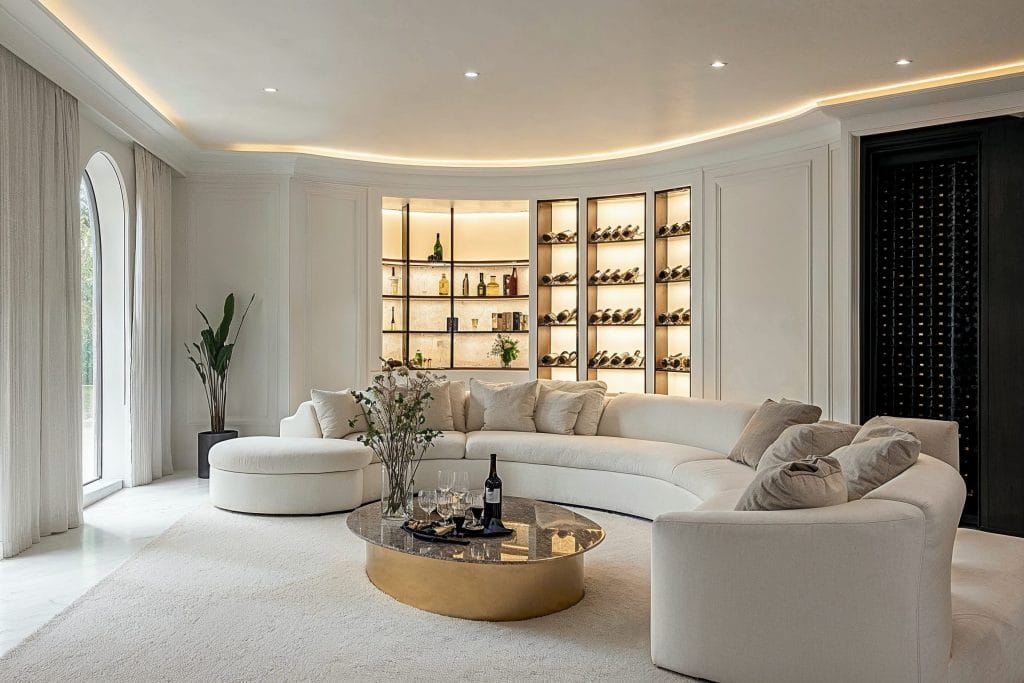
Today, many beautiful trends make up contemporary interior design, but some of these styles include eclectic, Scandinavian, minimalism, coastal, industrial, and glam.
What Is Contemporary Design?
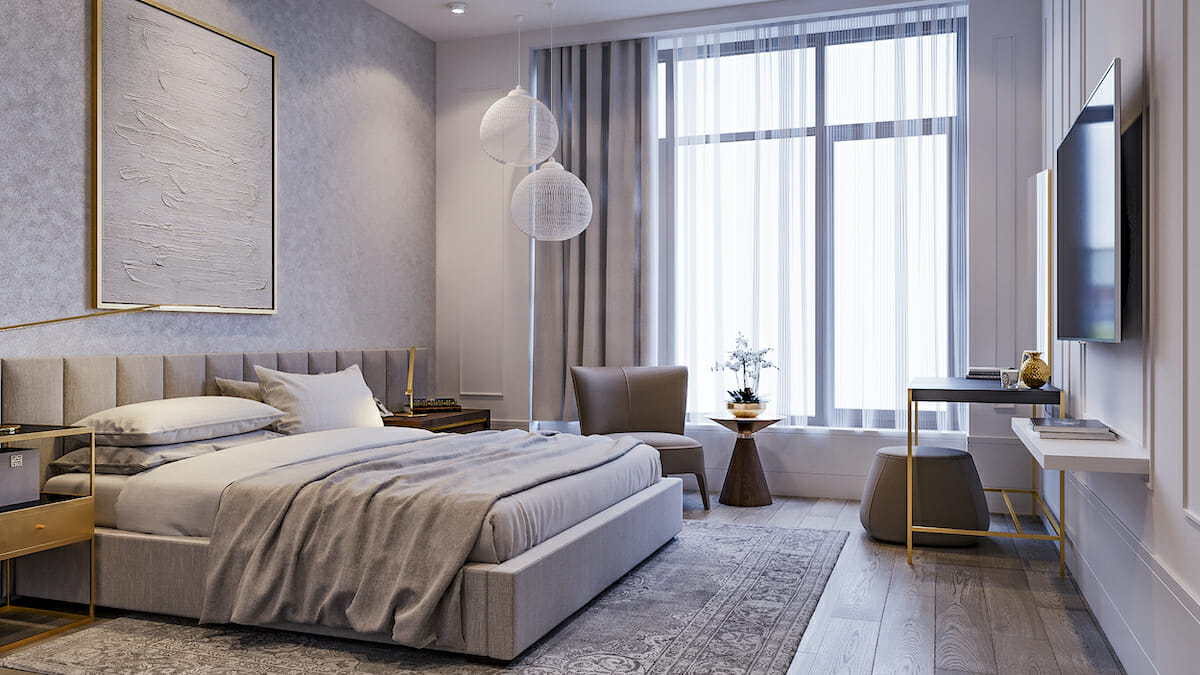
Simply put, when comparing modern vs contemporary interior design, contemporary refers to styles that are presently relevant and new. The move from stark modern lines began during the late 20th century. Yes, modern elements feature in contemporary designs, but innovation and a sense of fun set it apart from its predecessors. The softer edges and elaborate sculptural touches make contemporary interior design styles unique.
History of Contemporary Interior Design
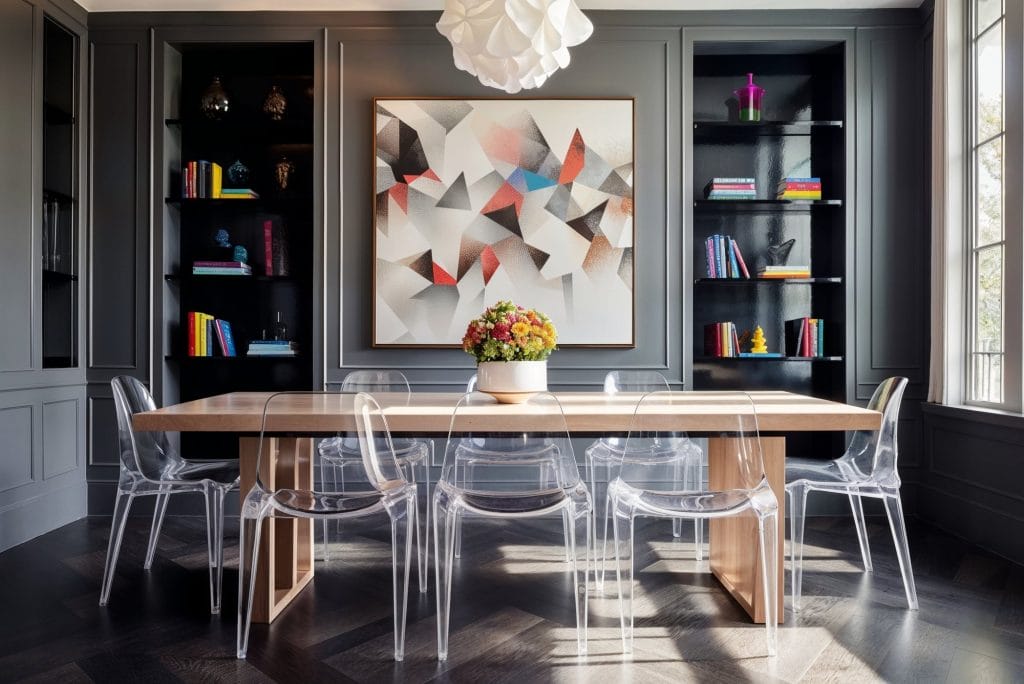
Just like any other style, contemporary design is a result of the current technological advancement. Most noteworthy influences include the digital revolution, information age, and environmentalism. Globalization also has a profound impact on contemporary design. Now, more than ever, interiors are a mix of various styles from the world over. In fact, Scandinavian design, with roots in modernism, feature heavily in present-day designs.
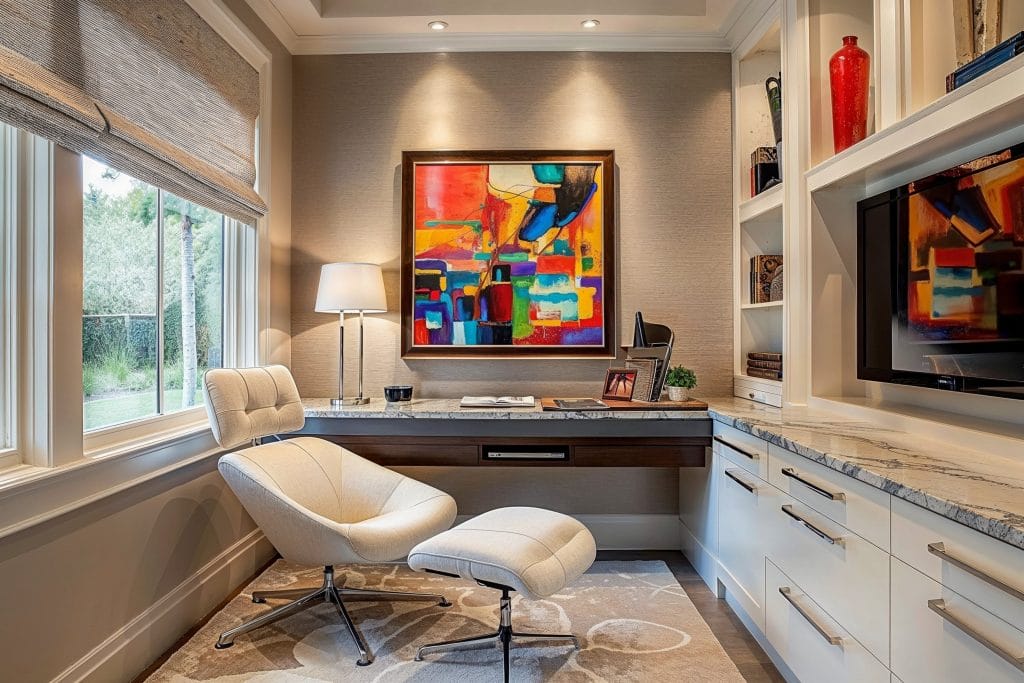
Even before the break of the new millennium, contemporary interior design ideas were growing. During the 1970s, at the same time as post-modernism, this contemporary design took shape. With influences like Art Deco, futurism and deconstructivism, it was a bold step into the unknown. Yet, we still cannot pin this young style to one specific aesthetic as every day brings another spin on current trends.
8 Elements That Make a Contemporary Interior Design
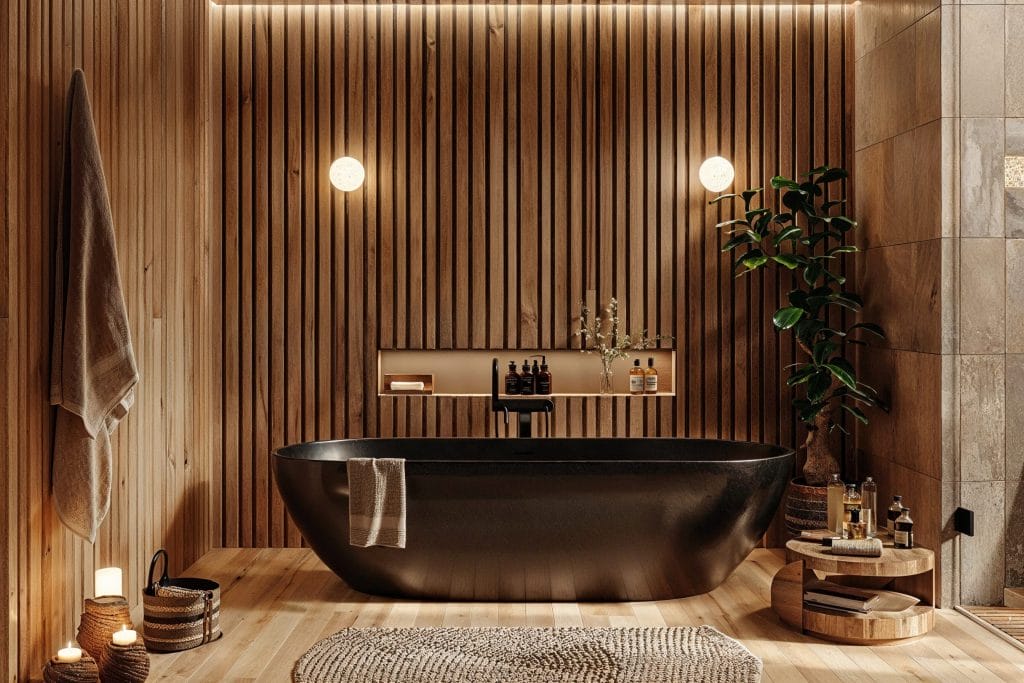
Spotting a contemporary design can be tricky as it borrows from many other styles. It is continually evolving, but these 8 elements can help you tell contemporary from a crowd.
1. Sculptural Light
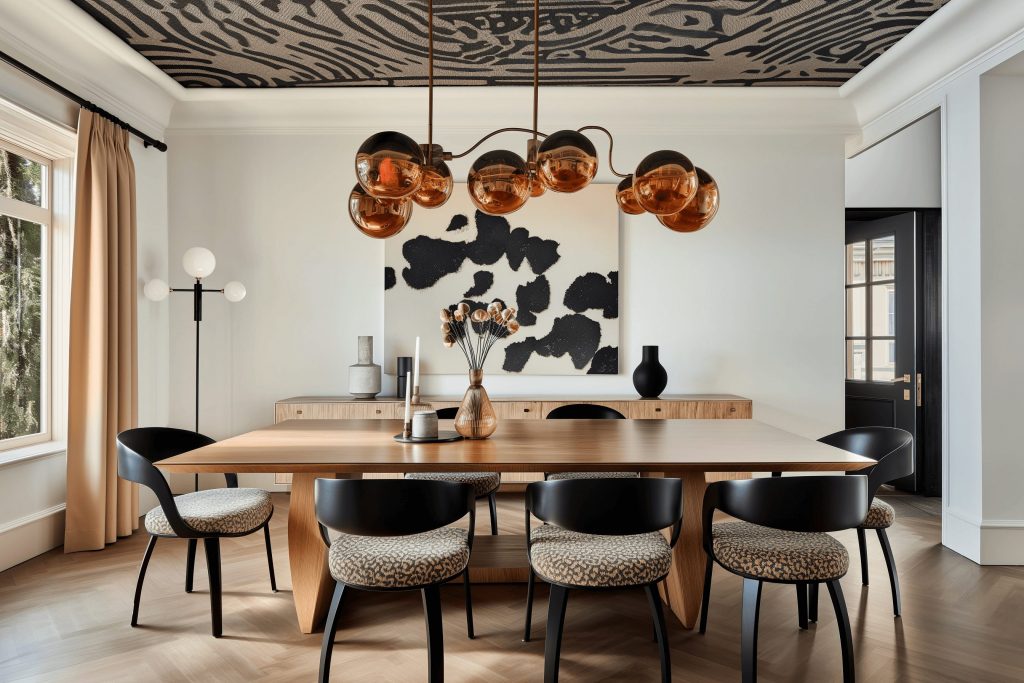
Lighting design is one of the great feats of the 21st century. Now feature lighting can carry as much weight in a contemporary room as a beautiful sofa or artwork. Contemporary designers have taken the humble light to unseen heights. They transformed a merely functional element into something beautiful – something that deserves the attention of a well-crafted sculpture.
2. Highlighting Construction
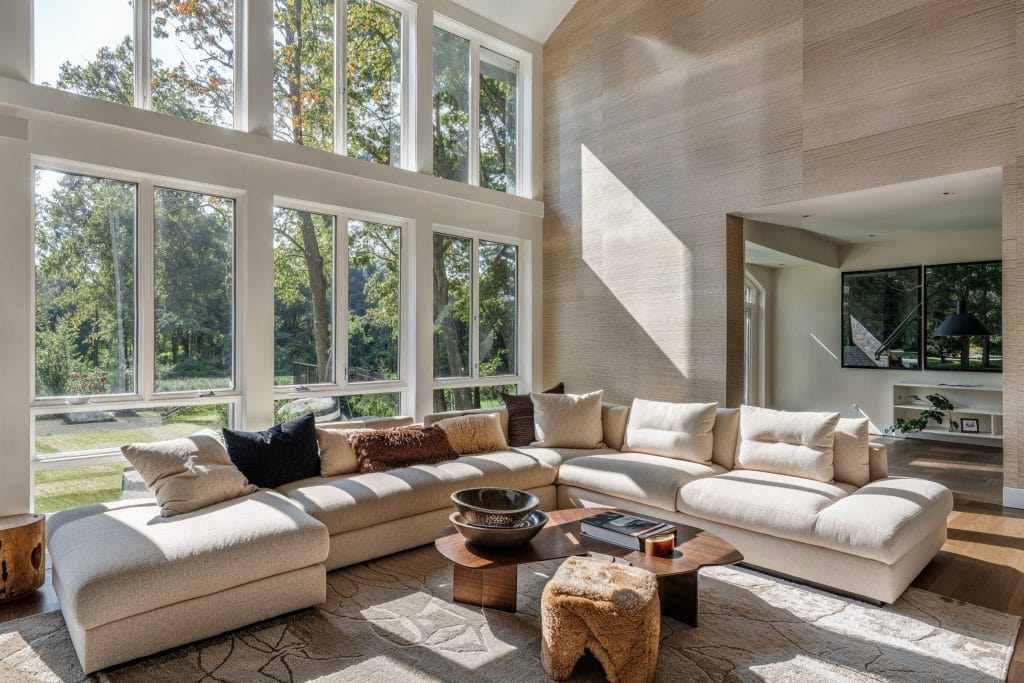
Exposed materials, especially in construction, are key to contemporary home interior design. Modernism’s bare structures influenced present-day designers to take it one step further. At times, the structure of a building is also left exposed.
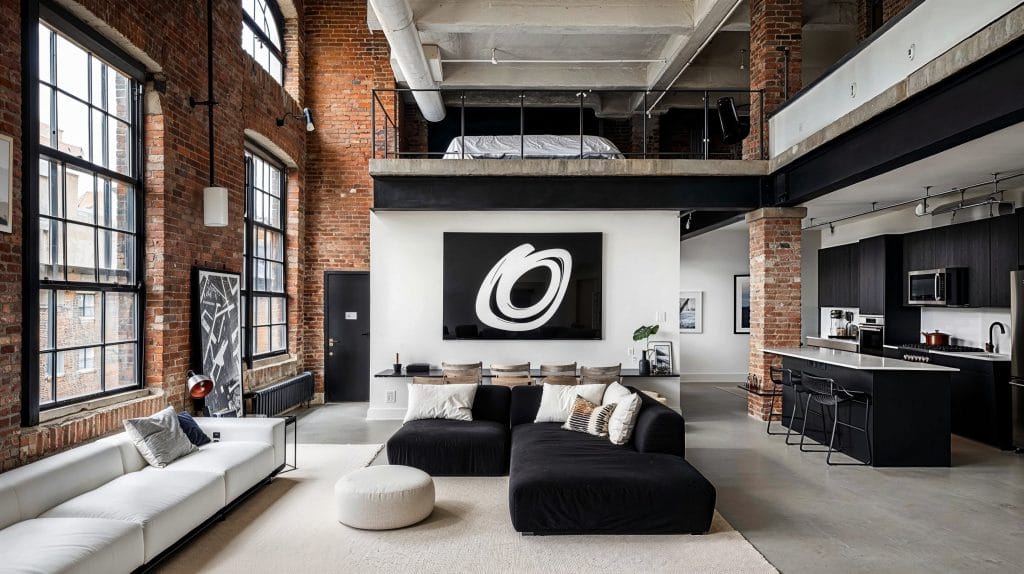
If you can see steel pillars, wooden beams, brick, or concrete of a building, it is certainly a contemporary one. Furniture designers and artists also use these materials to push the boundary between sculpture, art, and functional furniture.
3. Minimalism
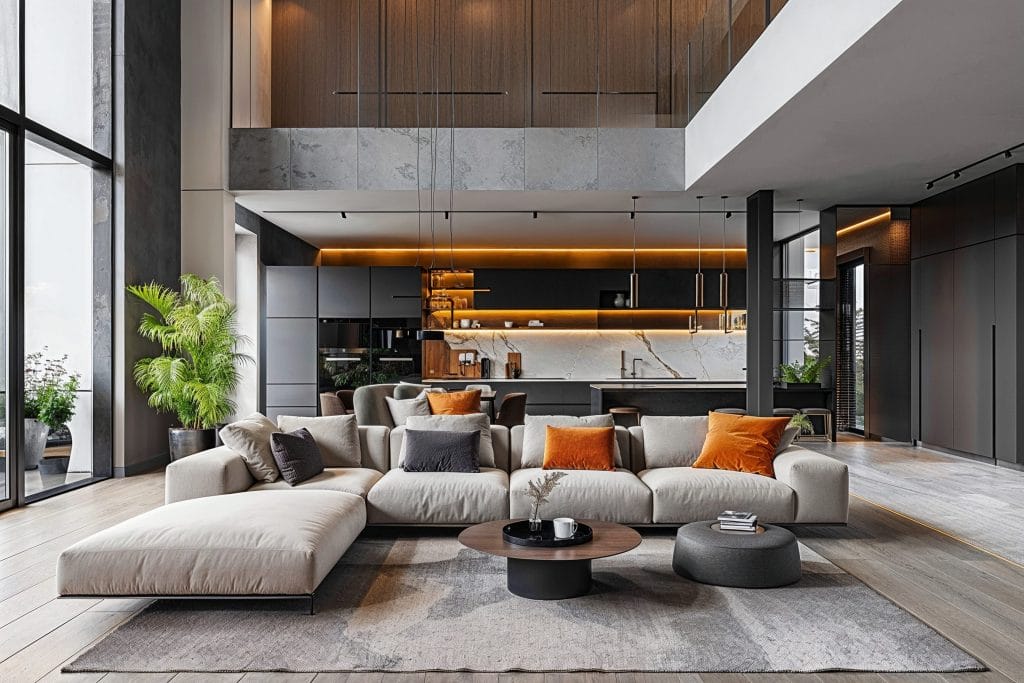
Form is even more simplified, compact, and efficient because of technological advancement. Minimalism is in full swing in contemporary design. Still, unlike its predecessor, the function of an object could be to look good. Yet, as forms are simplified, the interior, on the whole, could be minimal or even maximalist.
4. Updated Materials
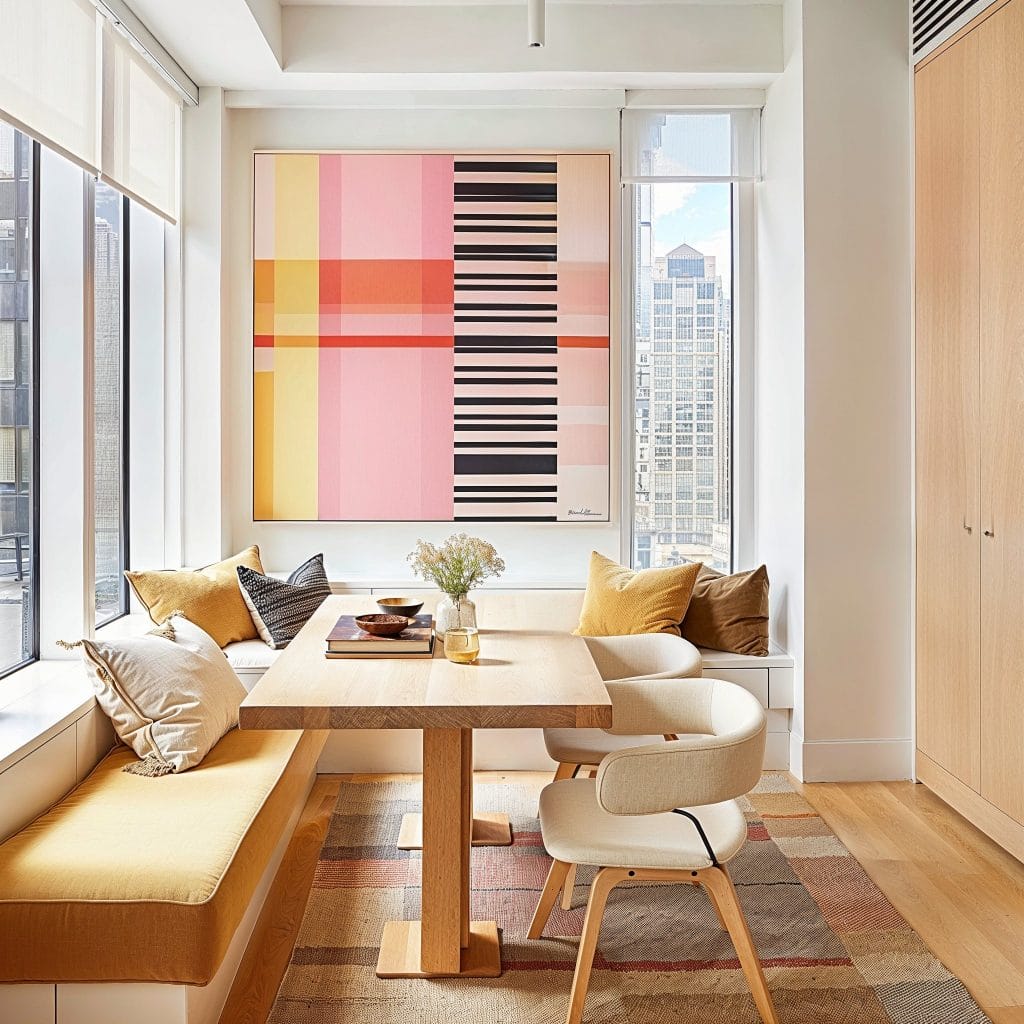
Innovative and more environmentally friendly materials give contemporary design a visual edge. Concrete, glass, and metal still feature like in modernism, but there are also many additional materials. Bamboo, cork, recycled plastics and glass, aluminum, and clay all feature in the new world of interiors.
5. Traveler’s Flare
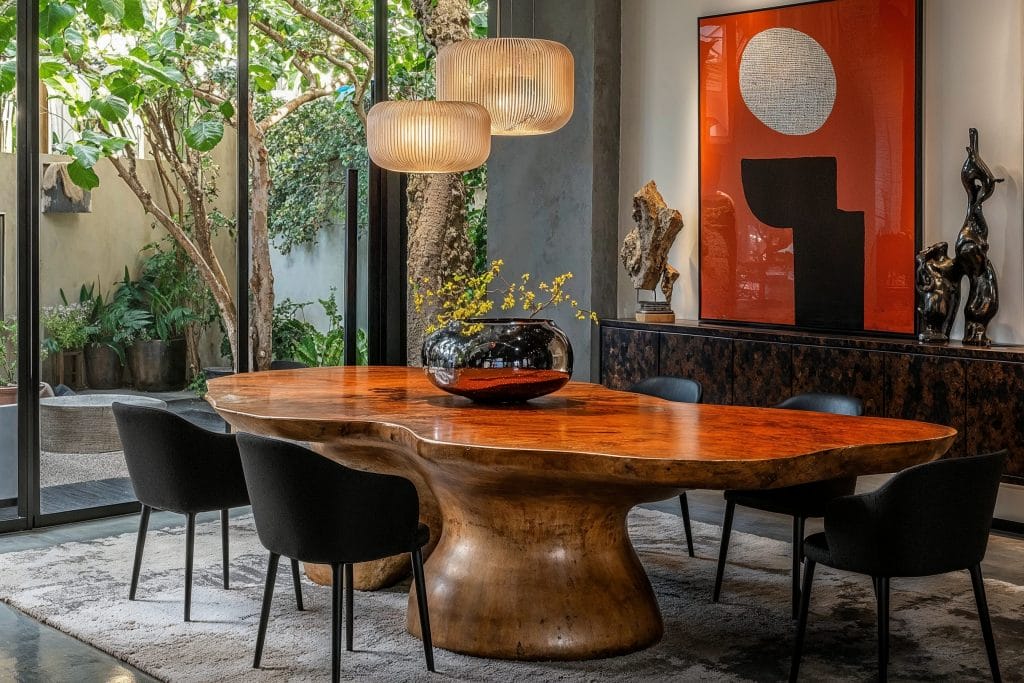
As any part of the world becomes more accessible, styles are mixing and blending to create something new. As a result, contemporary interior design always showcases an additional influence. Be it from past or present, or from Asia, South America, or beyond.
6. New Neutral
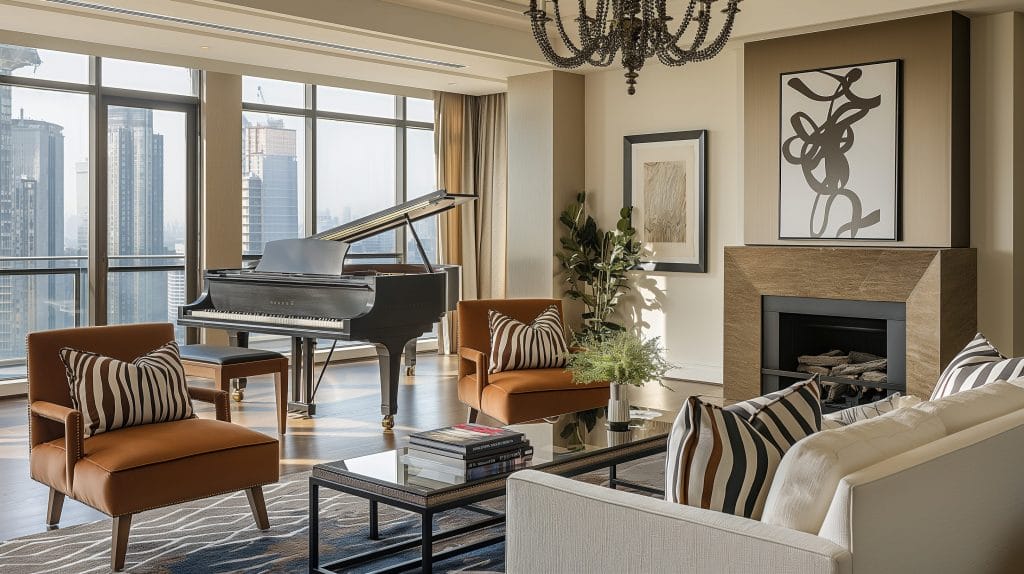
Unlike the neutrals of modern homes, the colors in the contemporary interior are earthy and naturally neutral. This means that tones resemble those found in nature. Think stone grey, sandy browns, charcoal black, and cloudy whites. Color pops are also more natural with leafy greens or rich jewel tones adding the oomph to a space.
7. Contemporary Art
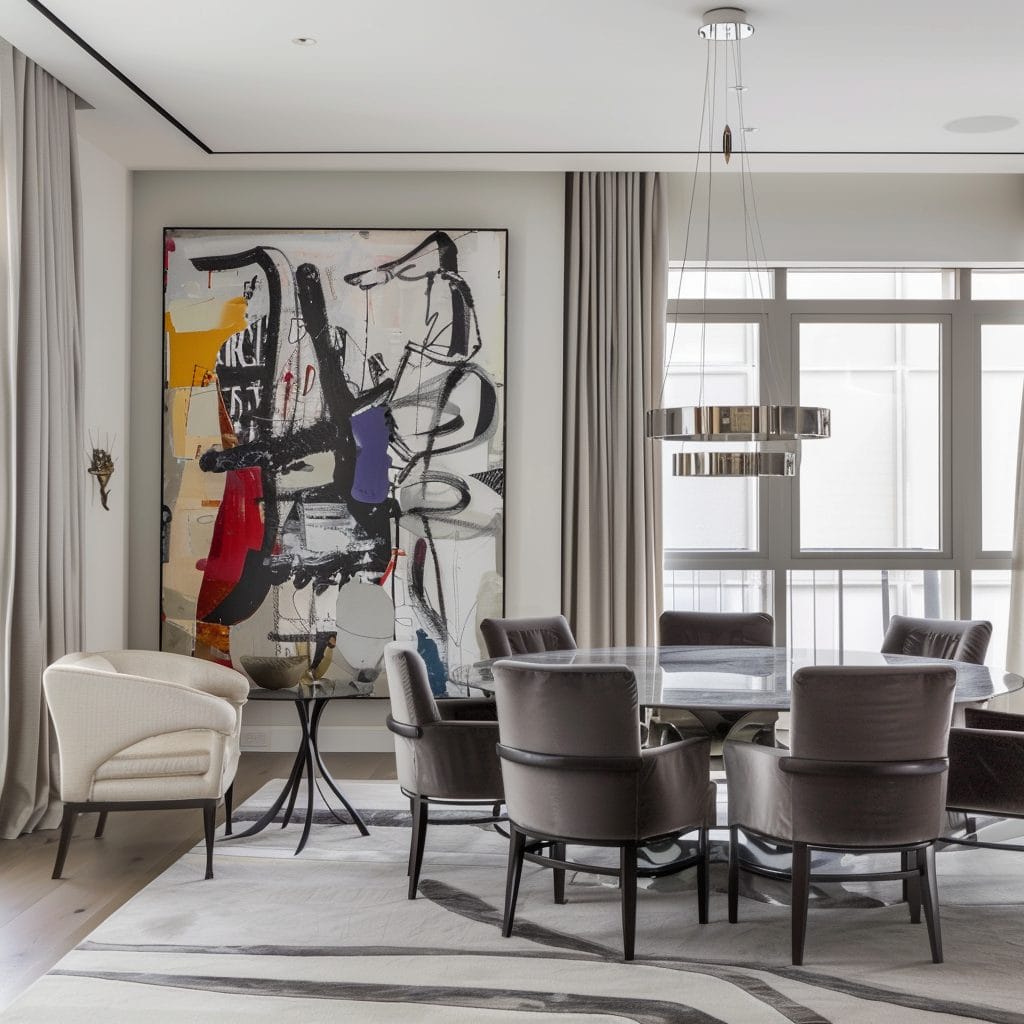
Artists have often been the catalysts for change in the design world. With each passing style, art is gaining prominence. In contemporary home interiors, artwork is reveled and often placed on its own. A feature wall or as a standalone statue in an entryway is commonly incorporated. Additionally, the art of our time extends to functional objects. Though they are not overly ornate, items grow more aesthetically pleasing.
8. Open Plan
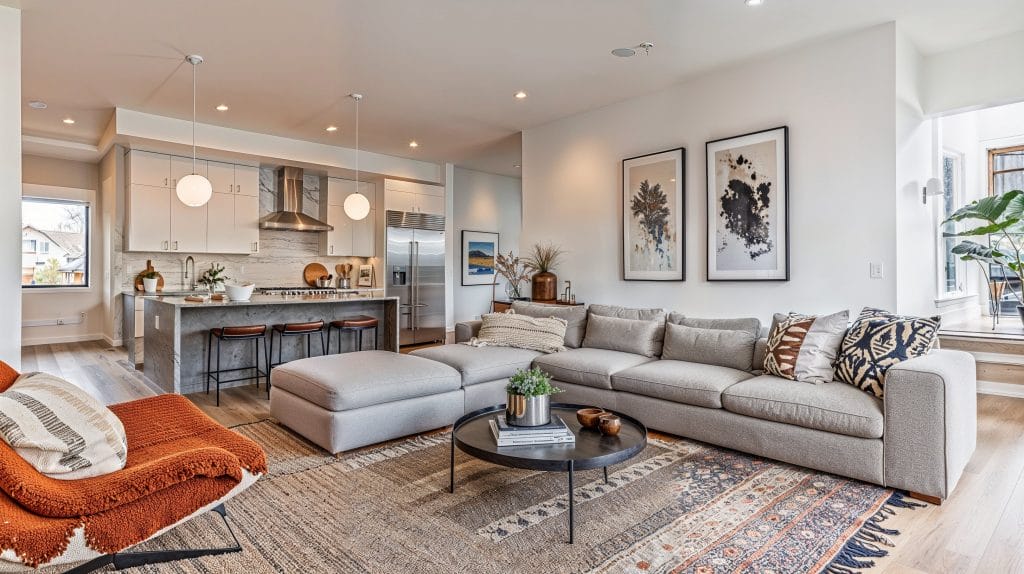
Open spaces, with less division, are the way to go in a contemporary modern design makeover. Consequently, contemporary home interiors are all about improving living. And a well-demarcated home with fewer walls can do just that.
5 Creatives Who are Shaping Contemporary Design Styles
Because contemporary interior design is not static, interior designers are forever updating and perfecting their style. Today, innovative designers push the boundaries of interiors, but we can be sure that there’s more still to come.
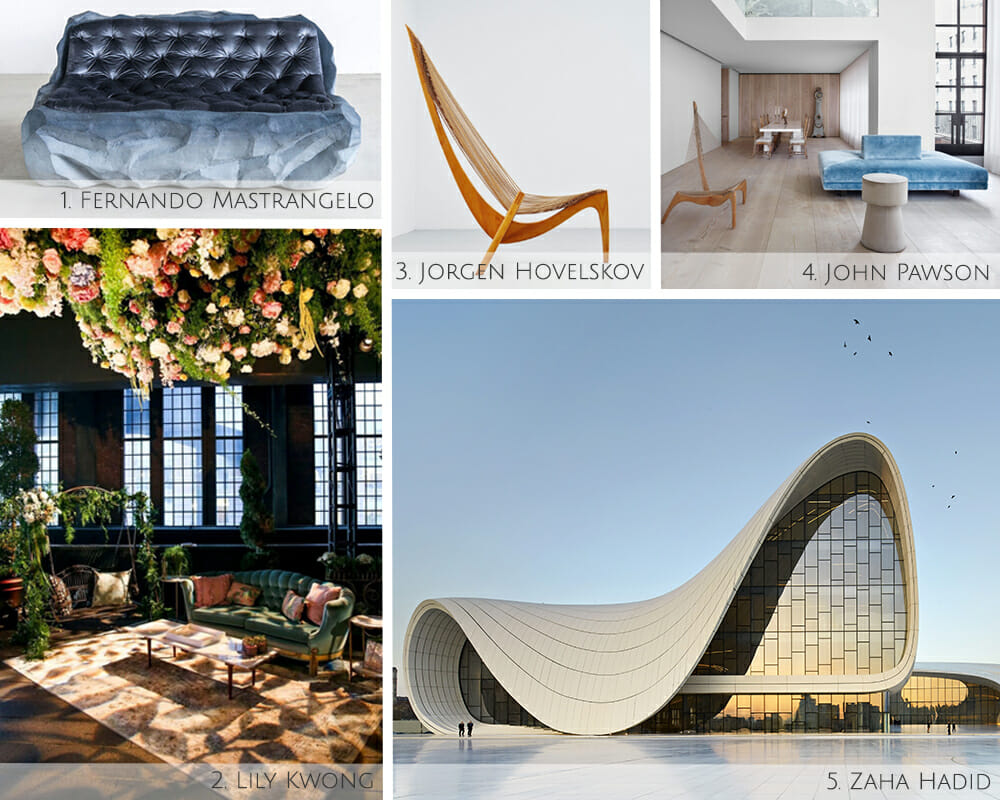
Fernando Mastrangelo
Brooklyn-based artist Fernando Mastrangelo creates without boundaries. His experimental works include furniture, architecture, interiors, sculpture, and painting. Certainly, Mastrangelo shows just how sculptural functional pieces can be.
Lily Kwong
Contemporary design reconnects humans to nature. And through landscape design, Lily Kwong highlights the versatility of botany and horticulture in constructed spaces. Her designs revive the urban sphere with living masterpieces.
Jorgen Hovelskov
Championing furniture design in the present day is Jorgen Hovelskov. His ‘Harp Chair’ is a modern marvel in the contemporary world. Its simplicity is as harmonious as a musical composition.
John Pawson
Essentially minimalist, John Pawson’s interiors follow in modern interior design’s footsteps. For instance, each element of his designs is carefully considered and veers off from what is merely comfy or ornamental. The result is perfectly balanced, minimal, and welcoming above all.
Zaha Hadid
Known as “Queen of the curve”, Zaha Hadid is one of the most experimental architects of the 21st century. Above all, she’s the first woman to receive the Pritzker Architecture Prize. Her broad range of design includes the London Aquatics Center, the Broad Art Museum in the US, and Galaxy SOHO in China.
Similarities & Differences Between Modern vs Contemporary Interior Design
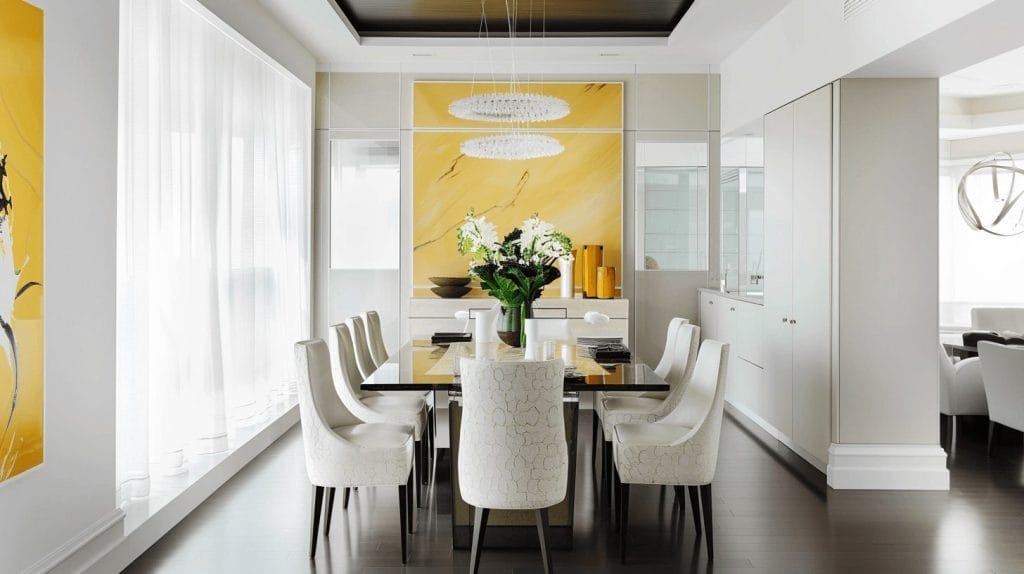
When comparing modern vs contemporary interior design, you’ll see they have many similarities but also key differences that make them easy to tell apart. So, here are their traits that overlap and differ.
Because modernism greatly influenced contemporary design, interiors from the two centuries have a few elements in common. These include:
- Minimalism
- Clean and crisp lines in architecture and furniture design
- Open spaces, combined living areas
- Form follows function
- Neutral color palettes
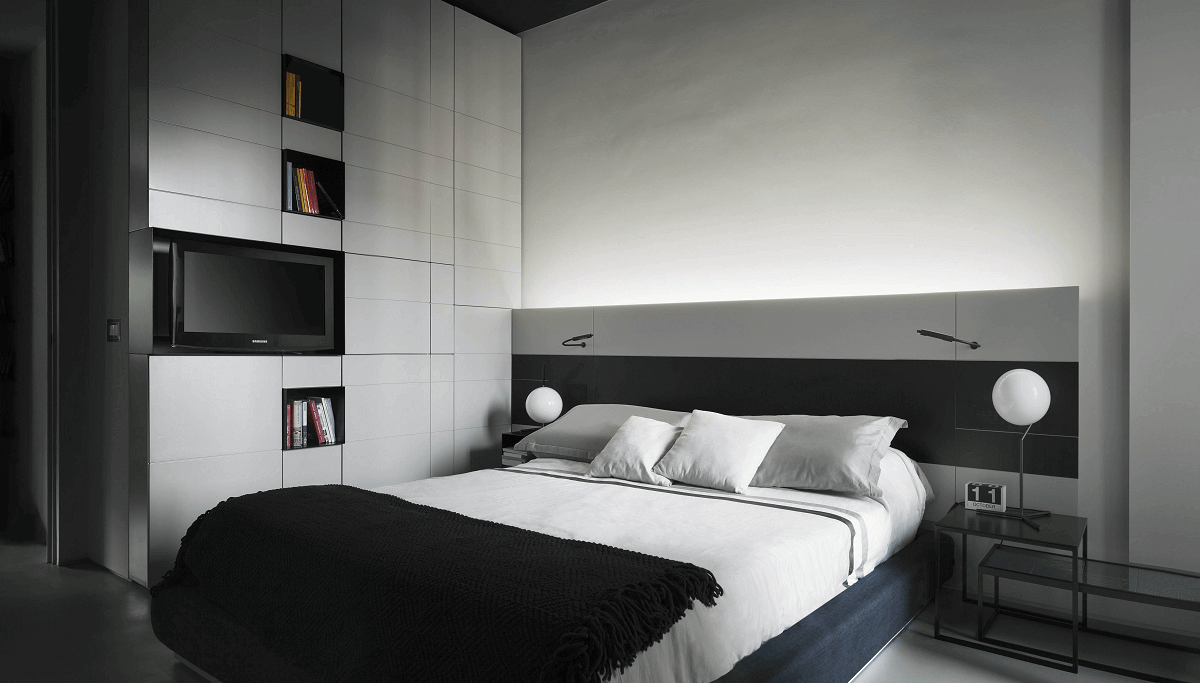
Even though modern and contemporary interior design styles are closely related, they have distinct differences, which include:
- Age: Modern design spanned from the late 1800s to the end of the 20th century. Whereas the contemporary style began during the late 1900s and is still ongoing.
- Material focus: Modern design makes use of dark or cherry woods, chrome, acrylic, leather and concrete. On the other hand, contemporary design features light wood, eco-friendly building material and recycled glass, plastic and wood.
- Architecture: Straight vertical and horizontal lines certainly characterize modern architecture. Although vertical and horizontal lines are important in contemporary styles, forms are more fluid and often curved.
- Lighting: Lighting design is big – even artsy – now, while a century ago, lights were modest and task-related.
Modern vs. Contemporary Interior Design FAQ
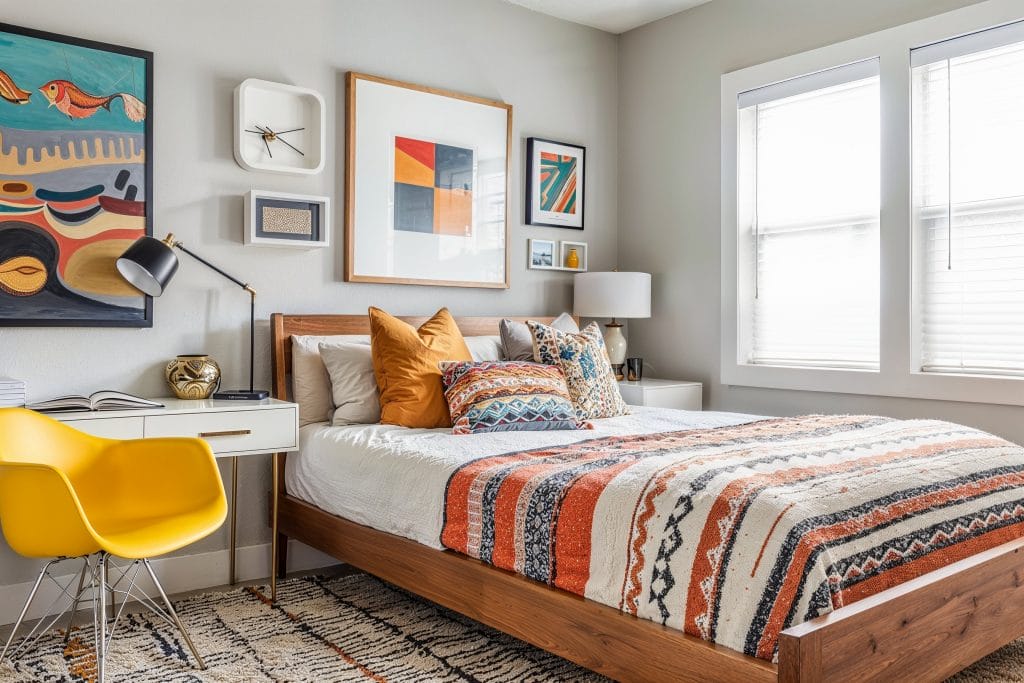
Modern design refers to a specific historical style rooted in the early to mid-20th century, focusing on clean lines and natural materials. Contemporary design evolves with current trends and is more fluid, often incorporating bold contrasts and sleek elements.
Yes, you can blend both. Focus on complementary elements to create harmony without clashing.
Both styles lean toward minimalism. However, contemporary design often feels sleeker with its bold, polished finishes and cutting-edge materials.
Understanding the modern vs contemporary interiors difference now?
Then, you’re ready to get started. If you’d still like a design expert’s advice, Schedule A Free Interior Design Consultation to make your modern or contemporary masterpiece come to life.









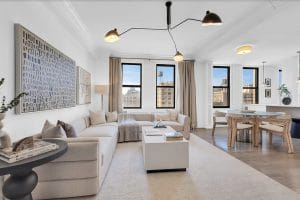
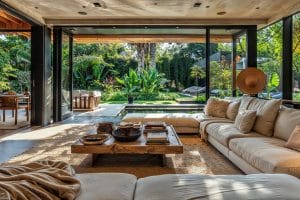
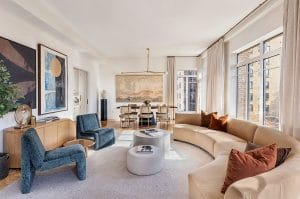
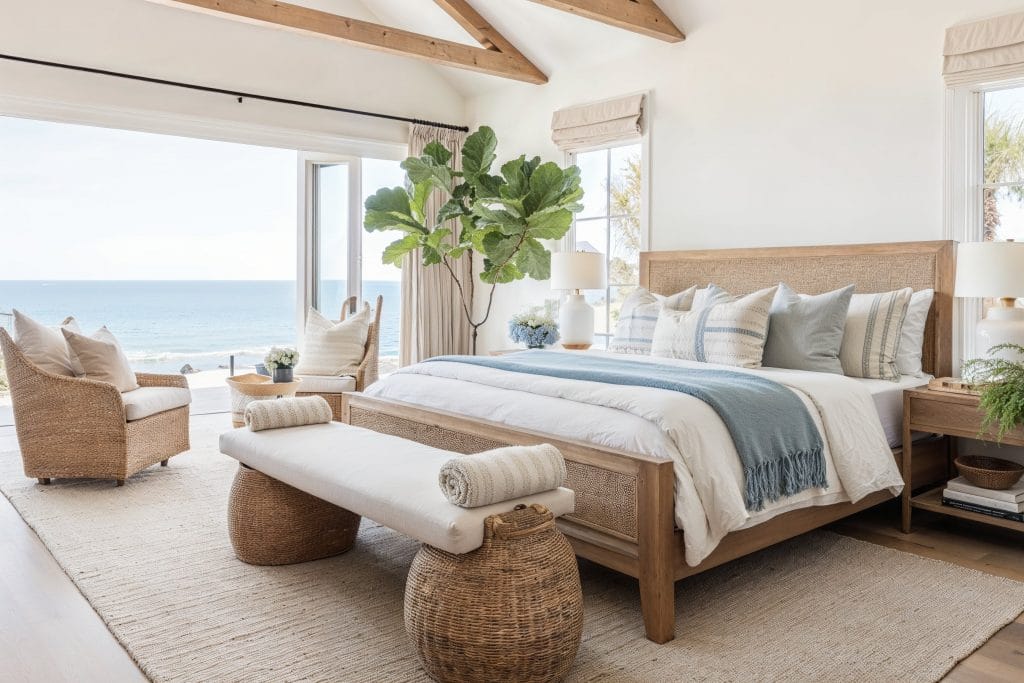
Comments